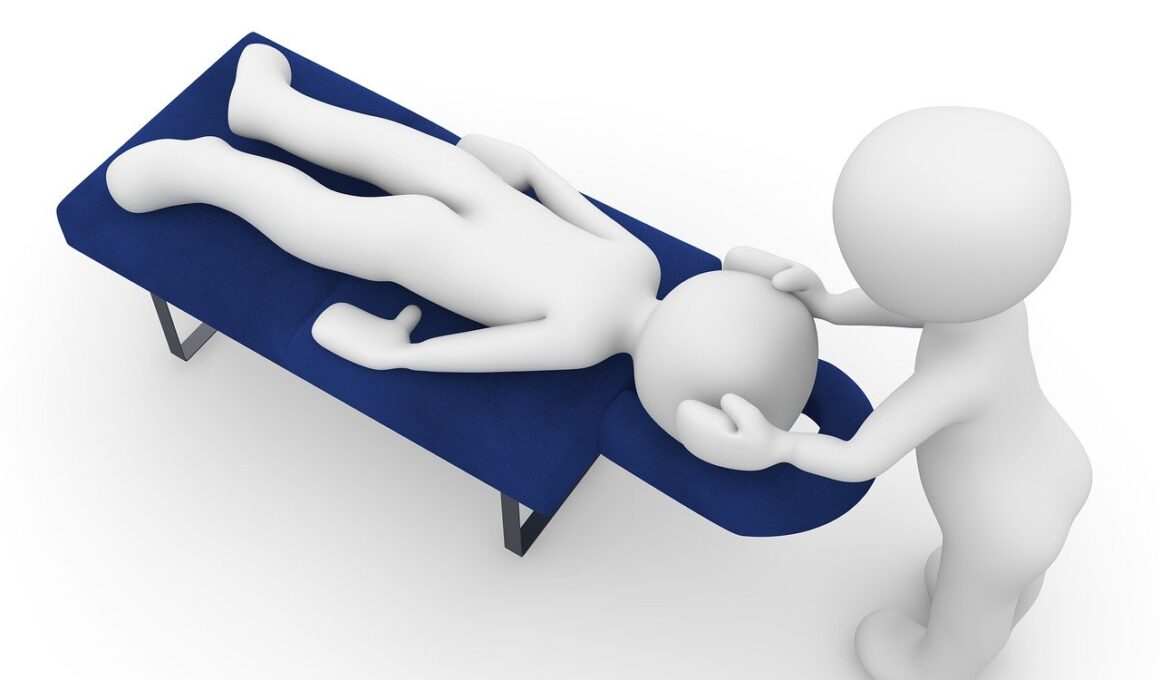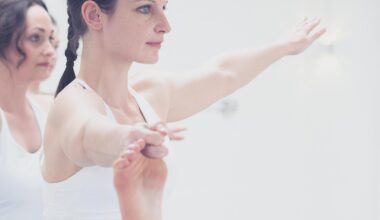Massage for Enhancing Hip and Lower Back Flexibility
Flexibility is a crucial aspect of our physical health, especially for maintaining mobility in the hips and lower back. Massage therapy plays an essential role in improving these areas by addressing muscle tightness, promoting circulation, and removing toxins from the body. Regular massage sessions can create a profound impact on overall flexibility and movement patterns, enabling the body to function at its best. Studies have shown that massage therapy aids in reducing muscle tension and enhancing blood flow, which is vital for the proper functioning of joints and muscles. Techniques such as deep tissue and sports massage specifically target the hip and lower back regions, providing relief from discomfort and enhancing flexibility. Moreover, by employing stretches and movements during and after massage, clients can further improve mobility and decrease their risk of injury. Each massage session serves to facilitate healing, ensuring that the body stays limber whether for sports, daily activities, or recovery from injuries. It is essential to consult a qualified massage therapist to explore techniques specifically tailored for enhancing hip and lower back flexibility effectively.
This therapy, particularly beneficial for athletes, helps maintain optimal performance by preventing stiffness. When athletes or active individuals incorporate massage into their routine, they often experience an increase in their range of motion. This effect is especially noted in activities that rely heavily on the lower body, such as running and dancing. Regular massage not only alleviates soreness but also contributes to longer-term flexibility gains which are necessary for refined movement patterns. By loosening tight muscles, therapists enable an individual to extend further into stretches and moves without discomfort. Continued treatments have led to notable improvements in flexibility not just for athletes, but also for casual exercisers. Everyday movement becomes easier as adaptations take place in the body’s muscle memory. Improving flexibility through massage can also enhance the body’s posture, reducing the strain on the lower back. Better posture leads to a more balanced body overall, which is crucial for maintaining flexibility. While participants often expect immediate results, the most effective application of massage therapy occurs over time, providing sustained benefits as flexibility gradually improves.
Techniques Used in Massage Therapy
The techniques employed in massage therapy are diverse; each aimed at enhancing flexibility tailored for the hip and lower back regions. One method, known as myofascial release, focuses on manipulating fascia — the connective tissue surrounding muscles. This technique aids in relieving tension and promoting greater range of motion. Another technique, called trigger point therapy, aims at identifying tight knots within muscles, applying pressure relief and enhancing flexibility through release. Additionally, the use of dynamic stretching during the massage can effectively promote movement and flexibility. By integrating stretching into each session, the body adapts more readily to extended ranges of motion. If utilized consistently, it fosters a natural progression toward greater flexibility, easing the discomfort associated with muscle tightness. Moreover, therapists often apply specific strokes and pressures tailored to a client’s individual needs, adjusting techniques based on feedback. Therefore, it becomes vital to communicate effectively during each session to achieve the desired outcome. Tailoring methods like deeper massage strokes or more superficial ones can have differing impacts on flexibility, thereby ensuring the best approach for muscle relaxation and range enhancement.
Understanding the benefits of massage therapy is crucial to acknowledge how flexibility influences overall health. Improved flexibility helps to alleviate pain associated with tight muscles and aids in recovering from injuries sustained in the hip or lower back areas. Increased blood circulation enhances nutrient delivery to soft tissues, leading to a quicker recovery and better muscle function. Clients often report feeling lighter and more energized after engaging in massages that focus on these key regions. Moreover, while focusing on flexibility, massage therapy can create an overall sense of well-being, reducing stress and anxiety levels. As outlined earlier, muscle tension relief contributes to better posture and stability. By relaxing the body through regular massages, one may find that maintaining an active lifestyle becomes significantly easier. It is essential to prioritize a combination of both massage therapy and a structured stretching routine for optimal benefits. Regularly scheduled sessions with a licensed therapist will not only promote greater flexibility but also aid in achieving an enhanced state of overall wellness that encompasses both physical and mental aspects of health.
Integrating Stretching with Massage
Incorporating stretching routines alongside massage therapy creates a comprehensive approach to improving hip and lower back flexibility. Stretching is essential in maintaining mobility, especially post-massage when muscles are warm and more supple. Engaging in static stretches can further elongate the muscles and prevent the re-tightening that sometimes occurs after sessions. It’s advisable to wait a day or two after massage sessions before performing rigorous stretches, allowing muscles adequate time to recover. When executed properly, stretches can enhance overall flexibility, maintain joint health, and lessen the chances of re-injury. Dynamic stretches may also be utilized as warm-ups, preparing the muscles for more intense physical activity following a therapy session. Engaging in yoga or pilates movements could serve as beneficial, complementary exercises for improving flexibility. They facilitate the application of both stretching and strengthening muscular actions throughout the body. Thus, a balanced incorporation of these elements supports greater mobility in the hip and lower back regions. As individuals progress, they will notice improvements not only in flexibility but also in their overall physical performance and well-being.
Before embarking on a journey to enhance flexibility through massage therapy, it is vital to set realistic goals. Each individual possesses a unique baseline level of flexibility, which influences the overall strategy for improvement. Setting achievable milestones is essential to minimize injury risk. Progress may be gradual, typically showing results after several sessions. Listening to the body and fostering patience throughout the process can assist individuals in recognizing and appreciating their achievements. Regular evaluations of progress can help fine-tune the massage plan and corresponding stretching initiatives, ensuring each participant is supported in their growth. Consulting with a qualified therapist can also provide insight into underlying issues such as muscular imbalances that may hinder flexibility. A thorough assessment, including understanding the client’s history and current physical state, is crucial to tailor the massage experience effectively. Ultimately, the combined approach of therapy and stretching serves as a means to boost flexibility while maintaining safety. By embracing this journey and the dedicated effort, clients will discover newfound freedom in movement, contributing positively to their quality of life as they enhance their mobility.
Conclusion
In conclusion, the importance of massage therapy in enhancing hip and lower back flexibility cannot be overstated. As the body grows older or becomes sedentary, it naturally tightens up, limiting mobility and causing discomfort. However, consistent engagement in therapy allows individuals to reclaim their freedom of movement. With the right techniques, such as myofascial release and trigger point therapy, therapists can target specific areas to achieve remarkable flexibility improvements. Integrating stretching routines proves beneficial in maximizing the results achieved during sessions. Furthermore, clients will experience overall health improvements that extend beyond their physical capabilities. The combination of relaxation and targeted therapeutic interventions fosters both physical flexibility and emotional well-being. Remember, this journey requires commitment, and is tailored uniquely to each person’s experience. Consulting with professionals is essential to create individualized plans that yield the most significant outcomes. Ultimately, embracing massage therapy as a dedicated part of one’s wellness journey will lead to greater flexibility, enhanced mobility, and an elevated quality of life overall.
For those considering massage therapy, it is advisable to explore the range of local certified practitioners. Many massage therapists specialize in offering tailored approaches aimed specifically at increasing flexibility. Each therapist brings its own unique experience and specialization, encouraging a deeper evaluation before choosing the best fit. Engaging in consultation sessions can provide insights into techniques used, aiding clients in making informed decisions regarding their therapy. Investing in this process is worthwhile, as the benefits can manifest in various aspects of life. Flexibility not only contributes to pain reduction but also enhances overall physical performance, making every activity more enjoyable. As you embark on this flexible journey, give yourself time to adapt and grow. By combining massage therapy with proper stretching and a balanced approach, clients can expect significant improvements in flexibility over time. Therefore, embracing this practice will not only bring relief but also provide lasting benefits in improving quality of life. Prioritize your health and wellness through these approaches, allowing both body and mind to thrive in improved flexibility and mobility.


